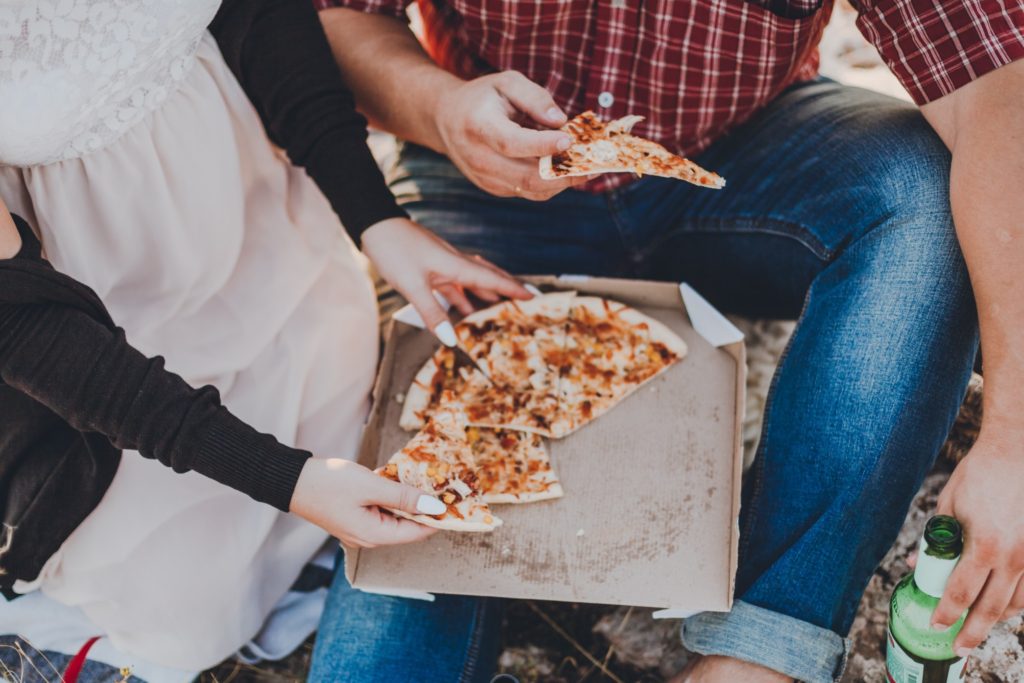New innovative restaurant and food tech is making nearly every element of food consumption easier, healthier, and better for us and for the planet. Our correspondent Julie Chang Murphy has investigated the latest trends in restaurant and food tech. From fine dining reservation systems trends to online food delivery platforms, lab-grown meat and vegan fishless fish, luxury restaurant and food tech is totally claiming its place at the table right now.
luxury restaurant tech and food innovation take their place at the table
Our monthly restaurant news updates, our series about the best restaurants in retail stores, and our Eatery Row reviews of dining spots that we love provide a steady supply of ideas about where to go out for an outstanding meal. But what about snagging a reservation, ordering in, and healthier eating?
Join our community
For access to insider ideas and information on the world of luxury, sign up for our Dandelion Chandelier newsletter. And see luxury in a new light.
Whether dining out or eating in, procuring food and drink without hassle remains a bit of a fantasy for many of us. Have you found yourself silently screaming the following pressing queries in recent weeks?
is it possible to snag a great reservation without stress?
It’s the beginning of the week and you and your busy friends have finally nailed down a time when you can catch up for dinner. Maybe you’re lucky to have one person in your cohort who always has the perfect restaurant suggestion. Or, maybe like my adorable but feckless bunch, you keep passing the baton until you end up at a mediocre spot last minute because you were too late to make a decent reservation anywhere else.
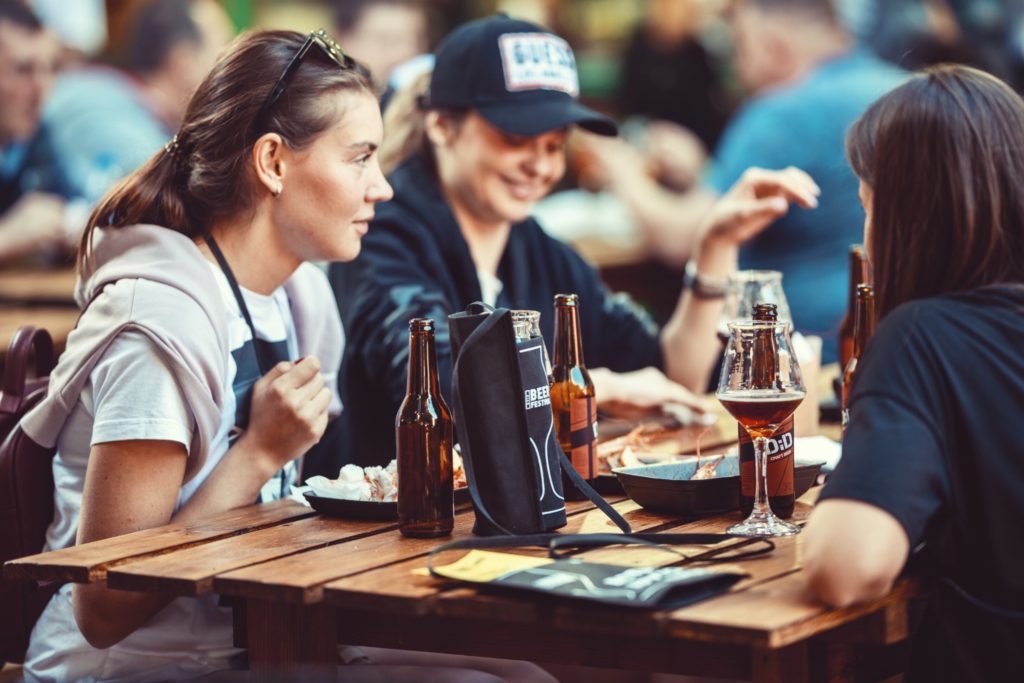
The restaurant, online food delivery and food tech trends to know now.
can a night of Netflix and chill really be chill?
Maybe this sounds familiar, too. You’re sitting at home trying to order in so you can binge watch that Netflix series everyone keeps talking about. First, you can’t remember your Seamless or UberEats password. After trying 5 more combinations, you give up and wait for the email to reset it.
You’re making progress adding entrees to your basket but then you realize you can’t customize it the way you do when you’re dining out. You think about phoning it in the old-fashioned way but your phone dies. You get back on your laptop and place the order. But when you go to check out you get the crushing news that it’s going to take 50-60 minutes to deliver.
A bowl of cereal or those leftovers from 2 days ago is looking more and more appealing. Ugh!

The restaurant, online food delivery and food tech trends to know now.
help is on the way
Rest assured, the latest in restaurant and food tech is making dining in or out a lot easier – and healthier. We’ve done some research into some of the most user-friendly and effective platforms to upgrade your dining experience.
We’ve also included some other out-of-the-box technological advances that may alter your dining habits in the months and years to come. It’s a brave, new, delicious world out there! Here’s the latest in restaurant and food tech you need to know.

The restaurant, online food delivery and food tech trends to know now.
restaurant and food tech trends: Fine Dining Reservation Systems
Resy
While Open Table and Yelp have dominated the scene for quite a while, and are much larger, the fine dining reservation system that we really love is Resy.
As one of our gourmand friends says, “Resy has all the cool restaurants I’ve been hearing about but can’t remember the name of when put on the spot.” The site also has a real point of view, with curated lists and restaurant collections that guide you on where to eat based on various themes. Resy also provides extensive profiles of its partner restaurateurs. The only caution? Resy doesn’t list non-partner restaurants on its site or app.
Not surprisingly, Resy’s premium positioning caught the eye of a strategic acquirer about a year ago. American Express acquired the company in 2019. As of this posting, AmEx has integrated Resy’s system within the Amex Mobile App. Combined with the American Express Global Dining Collection and other partners, American Express Platinum cardholders can now make reservations from over 10,000 restaurants worldwide on their mobile device.
Tock
Tock was first envisioned as a ticketing platform for restaurants. Diners prepaid for their experience, the same way they would pay for theater seats. It has since expanded into a fine dining reservation system as well.
The advantage to booking via Tock? The restaurants listed on the site set aside special seating, often in a more intimate and private dining room or other desirable location. You choose and pay a deposit for a multi-course tasting menu.
Don’t worry about being forced to choose your selections in advance. For example, at Aska, recently reviewed by our correspondent Jillian Tangen, there are options for a Chef’s, Vegetarian, Vegan, or Pescatarian menu. And having an ensured special seating area promises luxury and exclusivity. Which could be ideal for those times when you’re trying to impress clients (or your future mother-in-law).
Several months ago, Tock established a partnership with Chase Pay, giving its cardholders access to member-specific menus and events like winery tours and pop-ups. A key feature of this mobile payment platform, of course, is paying for your check. But you can also collect and redeem loyalty points with the click of a button.

The restaurant, fine dining reservation systems and food tech trends to know now.
Yelp Waitlist
Wandering around an interesting neighborhood and popping into a compelling hole-in-the-wall joint is a delightful part of being a New Yorker. However, it’s no fun to be at the whim of an overwhelmed host/hostess. Especially if they tell you the wait is 15 minutes tops. But the crowd size inside reminds you of the 6 train at rush hour.
Yelp acquired a company called Nowait in 2017, and fully integrated into the Yelp app. In mid-2019, the company changed the name from Yelp-Nowait to Yelp Waitlist.
Simply search for the name of the restaurant and see the wait time. Once you join the wait list, you can check your place in line in real time. You will then receive a text to confirm that your table is ready. No more standing around, impatiently eyeing that table polishing off their dessert in slo-mo.
Kabaq
We generally discourage phone use at the dining table. But there are exceptions to every rule. With the ubiquitous practice of posting food photos on Instagram, the next logical step is 3D renderings of food. Restaurants partnering with Kabaq’s augmented reality technology, can view their food on a mobile device or tablet prior to ordering.
For example, at Magnolia Bakery, future brides and grooms can project virtual renderings of cakes on to the table to help them envision their event. Another real world application of Kabaq’s innovative service is to help dieters gain a better idea of portion sizes. On the app, you can turn the entree 360 degrees, looking at it from different angles. For those ordering in, it manages expectations as menu descriptions are usually more perfunctory than poetically descriptive. It remains to be seen if this nascent technology will take off in restaurants. Will menus soon be obsolete?
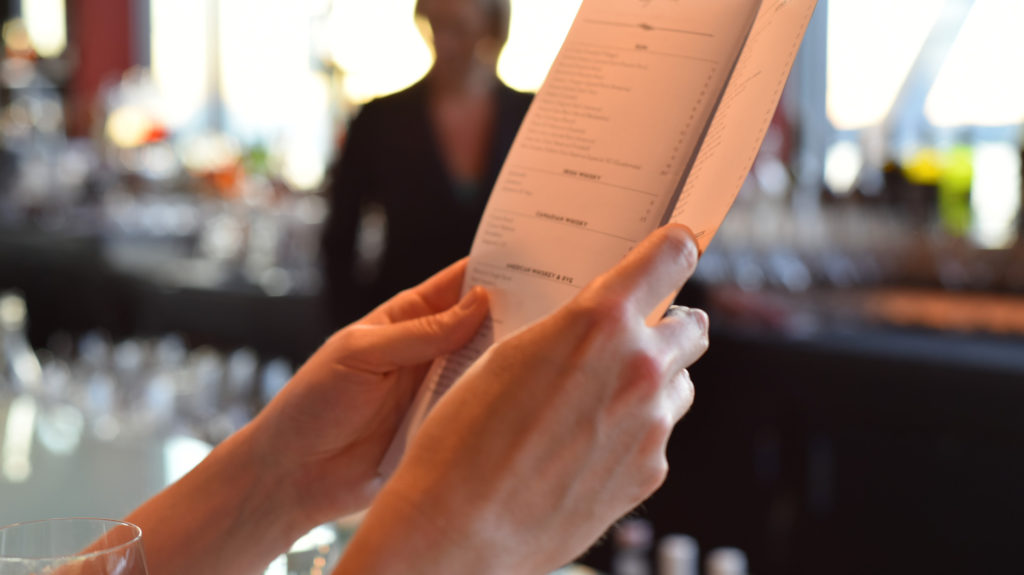
The restaurant, fine dining reservation systems and food tech trends to know now.
restaurant and food tech trends: Online Food Delivery Platforms + AI-enabled take-out
Millennials have been credited (or accused) of changing a lot of things in our society. In workplace culture, dating and marriage patterns, and of course in the realm of food.
They’re the group we can all thank for the ever-increasing rise of delivery and take-out options. According to the U.S. National Restaurant Association, millennials will form nearly 70 percent of consumers for food delivery companies by 2020. Here are some of the latest innovations in high tech food delivery.

Online food delivery trends.
Even more brands providing online ordering and delivery
Sweetgreen, every office worker’s favorite lunch option, has been expanding its Outpost program, making batch deliveries to local offices so that you never have to set food outside. The company is testing individual deliveries in 2020, as well.
The rise of “dark kitchens” that only prepare food for delivery and have no retail presence could fuel even more available options for delivery of both high-end and low-cost meals.
Closer partnership between restaurants and food delivery platforms
The Holy Grail of meal delivery is effortless ordering and near-instant delivery to your home or office. The problem? Most of us aren’t willing to pay much for that added convenience. So while a report from consulting firm Technomic Inc says that two-thirds of restaurants in America provide delivery through an online platform, for most of them, it’s unprofitable.
How to solve that issue, so that restaurants will remain engaged in home delivery? The Wall Street Journal reports that increasingly, online food delivery platforms and companies like DoorDash and Grubhub are sharing more data and fusing their technology more seamlessly with their restaurant partners.
Online food delivery platforms seem to be here to stay, and the industry has seen a bit of consolidation. In mid-2019, Door Dash bought Caviar, which was a much smaller platform specializing in delivery from boutique fine dining establishments. The move unites the extreme high and low ends of food delivery. Heading into 2020, Postmates is gearing up for an IPO, and UberEats is planning to expand. Restaurateurs are surely expecting a slice of their profit pie.
AI-Enabled Drive-Thrus
A Forbes food tech report notes that restaurants and fast food chains are increasingly focused on moving away from transactional relationships and into “conversations” with consumers.
What does that mean for us? Well, last year McDonald’s acquired a drive thru AI-voice platform called Apprente. Expect to see additional AI-driven conversational platforms for the food industry in the next couple of years.
Robot and drone delivery
Many tech companies are working to improve the so-called “last mile” of delivery. Self-driving vehicles, drones, a pizza making pick up truck…it’s all in the initial phases and will only get more ubiquitous and sophisticated.
For example, Uber is testing a new drone delivery service for Uber Eats in San Diego this year. The company shared a sneak peek of its delivery drone, which utilizes “innovative rotating wings with six rotors” to better enable the transition between vertical takeoff and forward flight.

The prototype of the new Uber Eats drone. Courtesy Photo.
At CES 2020, drone delivery startup Manna announced a partnership with food ordering company Flipdish. According to the companies, customers who place an order will be able to track the airborne drone and get an estimated time for delivery.
Starship Technologies is pilot-testing self-driving robots with internal cameras and sensors travel up to 4 mph within a 10-mile radius. Once these bots arrive at their intended location, the customer enters a code to retrieve their order.
Within the past year, in partnership with George Mason University and the food service giant Sodexo, Starship Technologies also launched the world’s largest fleet of 25 robots to service the University’s 40,000 students, faculty and staff. Each delivery of food and groceries takes about 15 minutes and costs $1.99.
restaurant and food tech trends: Protein and Nutrition
According to the Wall Street Journal, plant-based meat alternatives are a $684 million industry. While once these products would have been dismissed as “fringe,” the technology has improved the taste and texture to the point where its a viable broad-based business. It turns out that food itself is tech.
lab-grown and plant-based meat
We covered advancements in the quest for cruelty-free meat in detail this past July. Whether lab-grown or plant-based, there are several companies hot on the trail of vegan “meat” products.
The Impossible Burger 2.0, launched at CES 2019, was a huge leap forward in mimicking the texture, smell, and taste of real meat with no unpleasant aftertaste. Impossible Foods was the darling of CES 2020, too, this time with the debut of Impossible Pork. Pork is the most consumed meat in the world, so a plant-based version that could win wide acceptance is a Big Idea. The faux pork from Impossible Foods received rave reviews from the tech press upon its debut. Stay tuned, as Burger King will be rolling the product out in test markets this year.
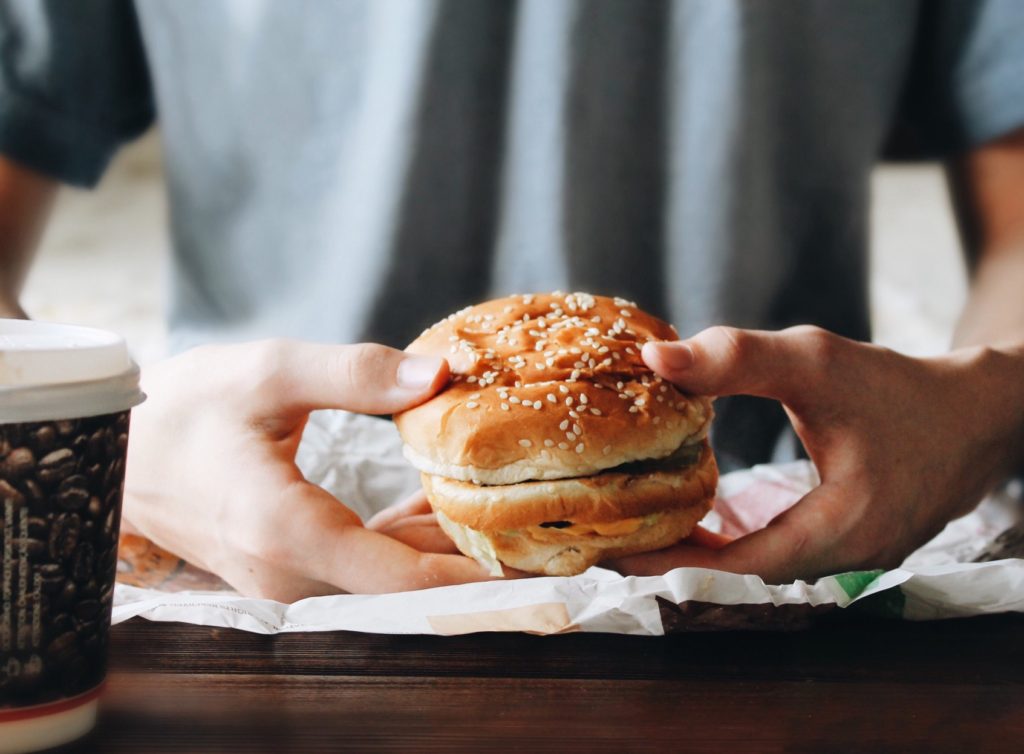
Trends in the development of plant-based and lab-grown meat and vegan fishless fish.
Vegan Fishless and lab-grown Fish
The past year or so has seen a marked improvement in the quality and taste of vegan plant-based fish and shellfish. Experimenting with ingredients like algae, konjac (an Asian root vegetable), and seaweed, combined with innovative advances in processing the moisture from the plants has led to tastier formulations of prawns, smoked salmon, “fishless” fingers and tuna.
Tuno and Good Catch Foods are brands that offer seafood options with proprietary blends of legume products and seaweed. Think plant-based tuna, crab cakes, and whitefish sliders. And Finless Foods is an early-stage biotechnology company that brings real fish to the table by growing bluefin tuna cells that can then be harvested and eaten.
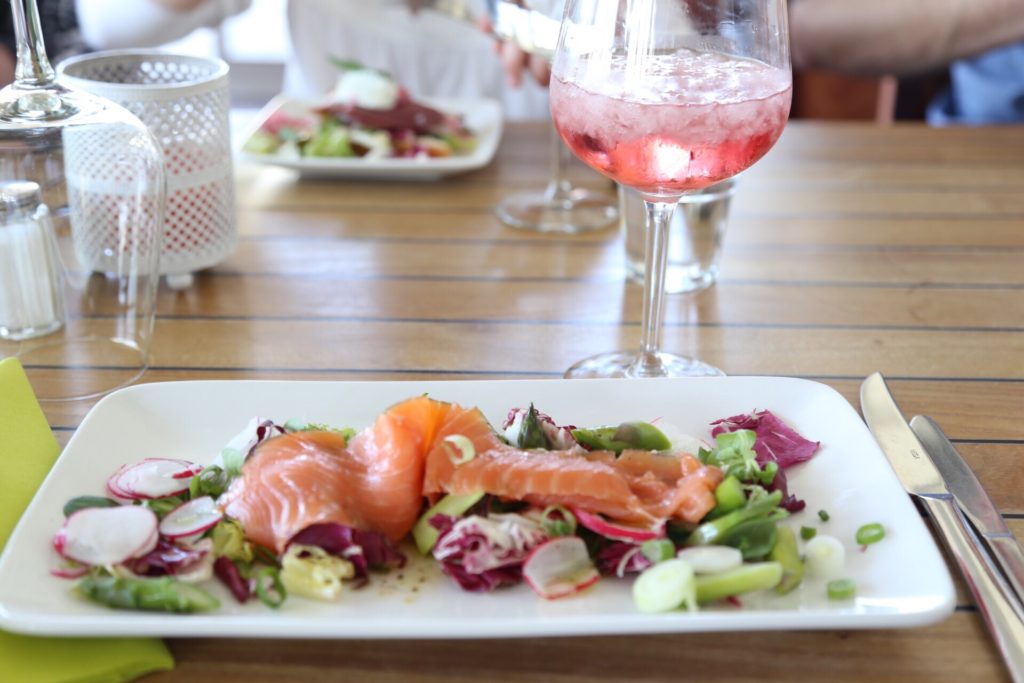
Trends in the development of plant-based and lab-grown meat and vegan fishless fish.
new restaurant and food tech
That’s it! The latest innovations to know in the world of restaurant and food tech. Has reading this whet your appetite? We have to admit, we’re feeling a bit peckish now. Bon appetit!
join our community
For access to insider ideas and information on the world of luxury, sign up for our Dandelion Chandelier Newsletter here. And see luxury in a new light.

Join our community
For access to insider ideas and information on the world of luxury, sign up for our Dandelion Chandelier newsletter. And see luxury in a new light.


